实例介绍
【实例截图】
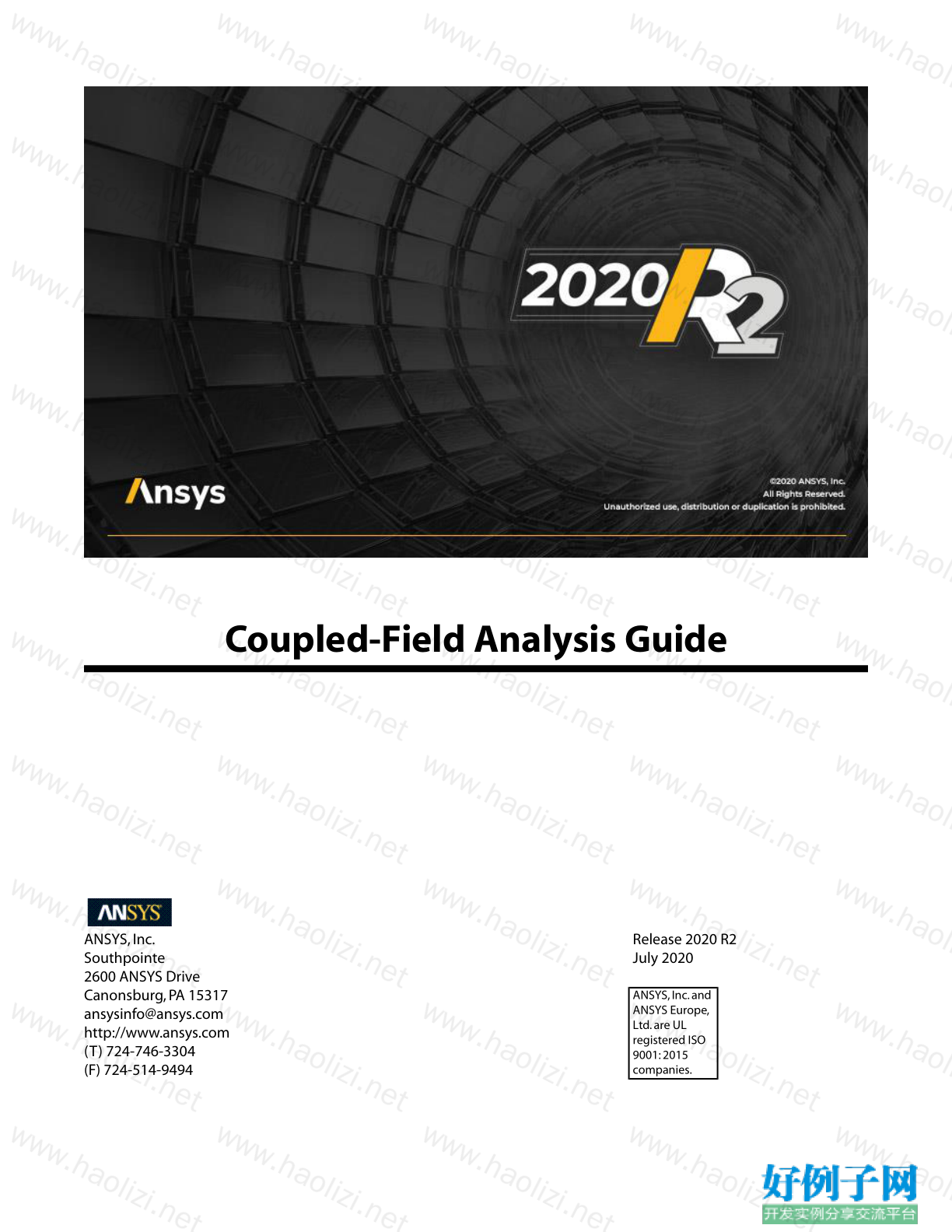

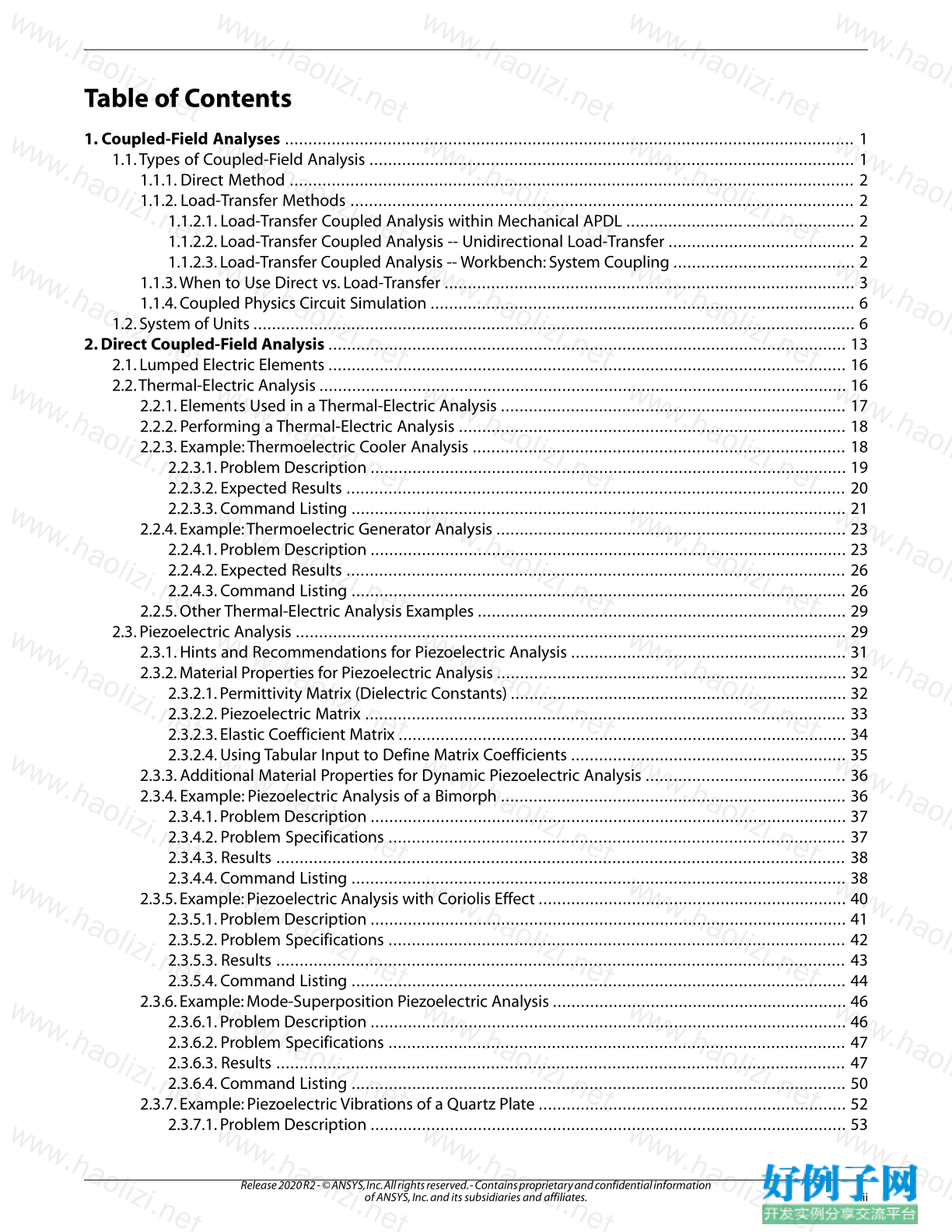
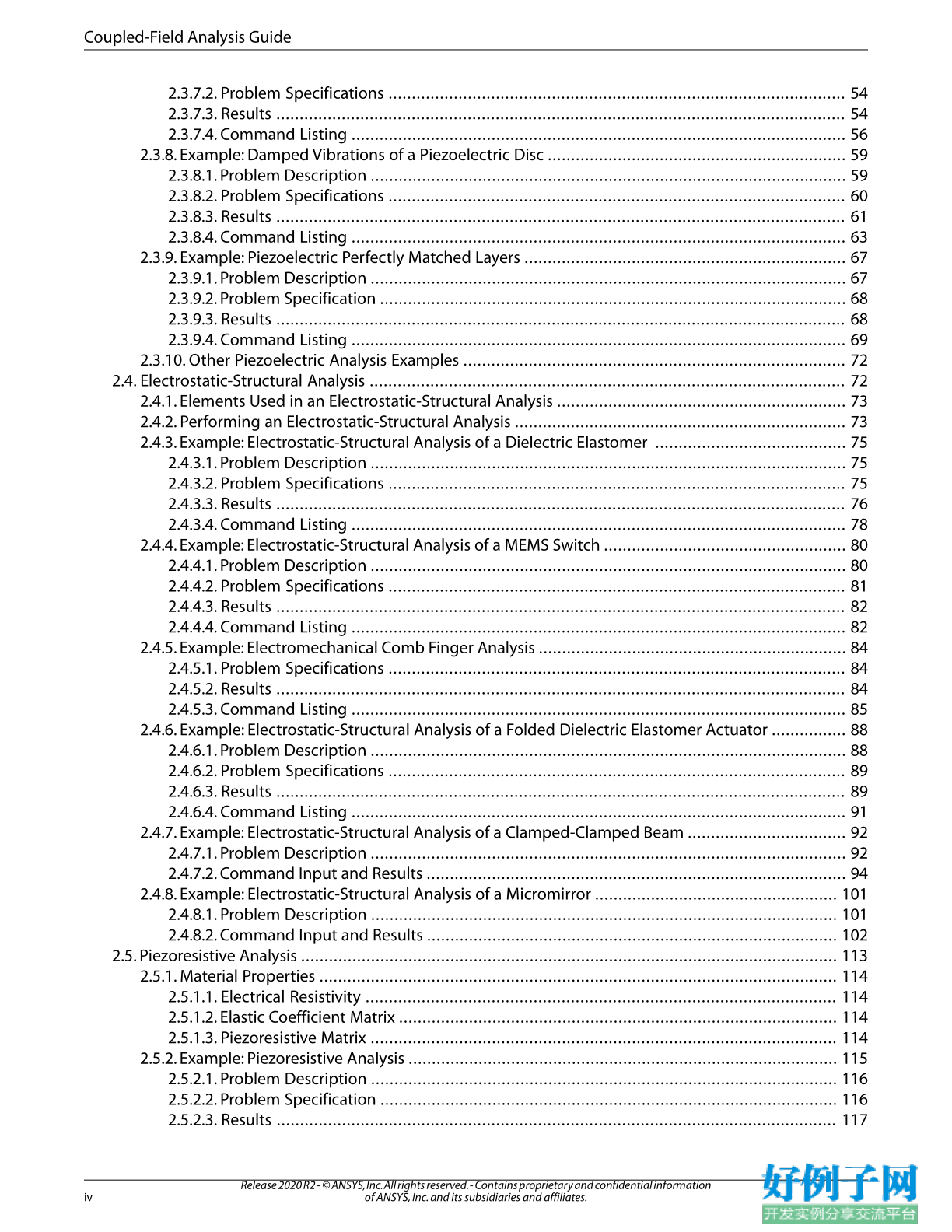


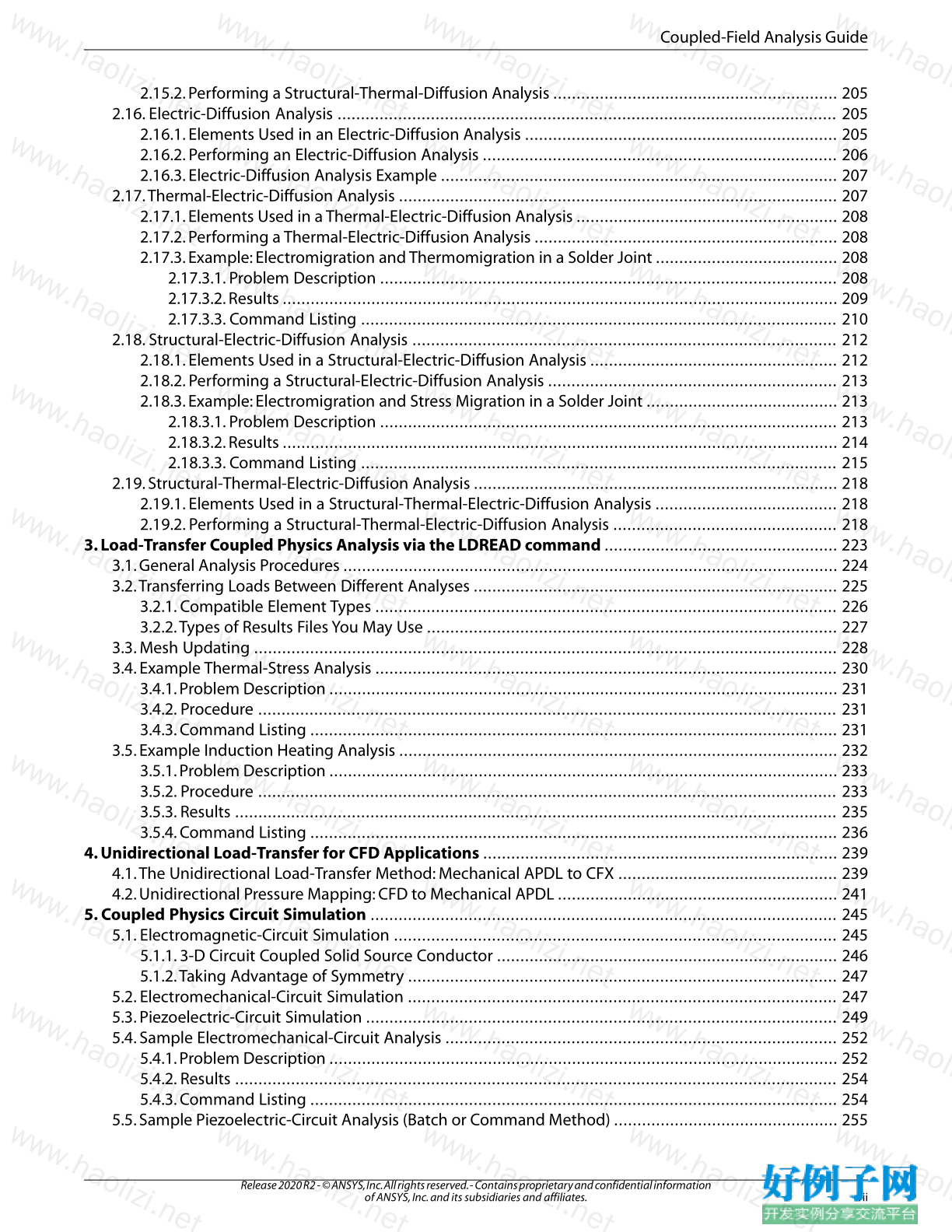
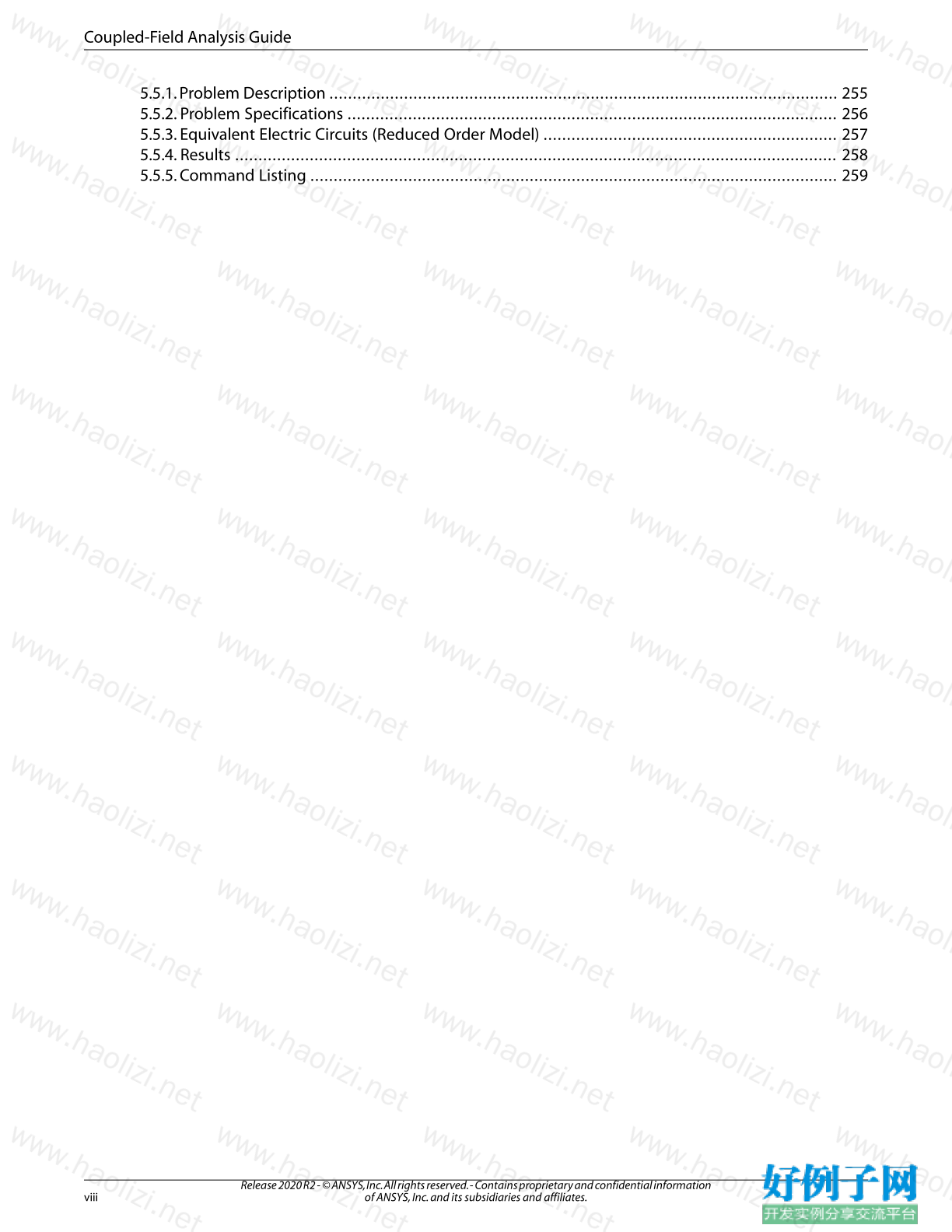
【核心代码】
Table of Contents
1. Coupled-Field Analyses .......................................................................................................................... 1
1.1.Types of Coupled-Field Analysis ........................................................................................................ 1
1.1.1. Direct Method ......................................................................................................................... 2
1.1.2. Load-Transfer Methods ............................................................................................................ 2
1.1.2.1. Load-Transfer Coupled Analysis within Mechanical APDL ................................................. 2
1.1.2.2. Load-Transfer Coupled Analysis -- Unidirectional Load-Transfer ........................................ 2
1.1.2.3. Load-Transfer Coupled Analysis -- Workbench: System Coupling ....................................... 2
1.1.3.When to Use Direct vs. Load-Transfer ........................................................................................ 3
1.1.4. Coupled Physics Circuit Simulation ........................................................................................... 6
1.2. System of Units ................................................................................................................................. 6
2. Direct Coupled-Field Analysis ............................................................................................................... 13
2.1. Lumped Electric Elements ............................................................................................................... 16
2.2.Thermal-Electric Analysis ................................................................................................................. 16
2.2.1. Elements Used in a Thermal-Electric Analysis .......................................................................... 17
2.2.2. Performing a Thermal-Electric Analysis ................................................................................... 18
2.2.3. Example:Thermoelectric Cooler Analysis ................................................................................ 18
2.2.3.1. Problem Description ...................................................................................................... 19
2.2.3.2. Expected Results ........................................................................................................... 20
2.2.3.3. Command Listing .......................................................................................................... 21
2.2.4. Example:Thermoelectric Generator Analysis ........................................................................... 23
2.2.4.1. Problem Description ...................................................................................................... 23
2.2.4.2. Expected Results ........................................................................................................... 26
2.2.4.3. Command Listing .......................................................................................................... 26
2.2.5. Other Thermal-Electric Analysis Examples ............................................................................... 29
2.3. Piezoelectric Analysis ...................................................................................................................... 29
2.3.1. Hints and Recommendations for Piezoelectric Analysis ........................................................... 31
2.3.2. Material Properties for Piezoelectric Analysis ........................................................................... 32
2.3.2.1. Permittivity Matrix (Dielectric Constants) ........................................................................ 32
2.3.2.2. Piezoelectric Matrix ....................................................................................................... 33
2.3.2.3. Elastic Coefficient Matrix ................................................................................................ 34
2.3.2.4. Using Tabular Input to Define Matrix Coefficients ........................................................... 35
2.3.3. Additional Material Properties for Dynamic Piezoelectric Analysis ........................................... 36
2.3.4. Example: Piezoelectric Analysis of a Bimorph .......................................................................... 36
2.3.4.1. Problem Description ...................................................................................................... 37
2.3.4.2. Problem Specifications .................................................................................................. 37
2.3.4.3. Results .......................................................................................................................... 38
2.3.4.4. Command Listing .......................................................................................................... 38
2.3.5. Example: Piezoelectric Analysis with Coriolis Effect .................................................................. 40
2.3.5.1. Problem Description ...................................................................................................... 41
2.3.5.2. Problem Specifications .................................................................................................. 42
2.3.5.3. Results .......................................................................................................................... 43
2.3.5.4. Command Listing .......................................................................................................... 44
2.3.6. Example: Mode-Superposition Piezoelectric Analysis ............................................................... 46
2.3.6.1. Problem Description ...................................................................................................... 46
2.3.6.2. Problem Specifications .................................................................................................. 47
2.3.6.3. Results .......................................................................................................................... 47
2.3.6.4. Command Listing .......................................................................................................... 50
2.3.7. Example: Piezoelectric Vibrations of a Quartz Plate .................................................................. 52
2.3.7.1. Problem Description ...................................................................................................... 53
iii
Release 2020 R2 - © ANSYS, Inc. All rights reserved. - Contains proprietary and confidential information
of ANSYS, Inc. and its subsidiaries and affiliates.
2.3.7.2. Problem Specifications .................................................................................................. 54
2.3.7.3. Results .......................................................................................................................... 54
2.3.7.4. Command Listing .......................................................................................................... 56
2.3.8. Example: Damped Vibrations of a Piezoelectric Disc ................................................................ 59
2.3.8.1. Problem Description ...................................................................................................... 59
2.3.8.2. Problem Specifications .................................................................................................. 60
2.3.8.3. Results .......................................................................................................................... 61
2.3.8.4. Command Listing .......................................................................................................... 63
2.3.9. Example: Piezoelectric Perfectly Matched Layers ..................................................................... 67
2.3.9.1. Problem Description ...................................................................................................... 67
2.3.9.2. Problem Specification .................................................................................................... 68
2.3.9.3. Results .......................................................................................................................... 68
2.3.9.4. Command Listing .......................................................................................................... 69
2.3.10. Other Piezoelectric Analysis Examples .................................................................................. 72
2.4. Electrostatic-Structural Analysis ...................................................................................................... 72
2.4.1. Elements Used in an Electrostatic-Structural Analysis .............................................................. 73
2.4.2. Performing an Electrostatic-Structural Analysis ....................................................................... 73
2.4.3. Example: Electrostatic-Structural Analysis of a Dielectric Elastomer ......................................... 75
2.4.3.1. Problem Description ...................................................................................................... 75
2.4.3.2. Problem Specifications .................................................................................................. 75
2.4.3.3. Results .......................................................................................................................... 76
2.4.3.4. Command Listing .......................................................................................................... 78
2.4.4. Example: Electrostatic-Structural Analysis of a MEMS Switch .................................................... 80
2.4.4.1. Problem Description ...................................................................................................... 80
2.4.4.2. Problem Specifications .................................................................................................. 81
2.4.4.3. Results .......................................................................................................................... 82
2.4.4.4. Command Listing .......................................................................................................... 82
2.4.5. Example: Electromechanical Comb Finger Analysis .................................................................. 84
2.4.5.1. Problem Specifications .................................................................................................. 84
2.4.5.2. Results .......................................................................................................................... 84
2.4.5.3. Command Listing .......................................................................................................... 85
2.4.6. Example: Electrostatic-Structural Analysis of a Folded Dielectric Elastomer Actuator ................ 88
2.4.6.1. Problem Description ...................................................................................................... 88
2.4.6.2. Problem Specifications .................................................................................................. 89
2.4.6.3. Results .......................................................................................................................... 89
2.4.6.4. Command Listing .......................................................................................................... 91
2.4.7. Example: Electrostatic-Structural Analysis of a Clamped-Clamped Beam .................................. 92
2.4.7.1. Problem Description ...................................................................................................... 92
2.4.7.2. Command Input and Results .......................................................................................... 94
2.4.8. Example: Electrostatic-Structural Analysis of a Micromirror .................................................... 101
2.4.8.1. Problem Description .................................................................................................... 101
2.4.8.2. Command Input and Results ........................................................................................ 102
2.5. Piezoresistive Analysis ................................................................................................................... 113
2.5.1. Material Properties ............................................................................................................... 114
2.5.1.1. Electrical Resistivity ..................................................................................................... 114
2.5.1.2. Elastic Coefficient Matrix .............................................................................................. 114
2.5.1.3. Piezoresistive Matrix .................................................................................................... 114
2.5.2. Example: Piezoresistive Analysis ............................................................................................ 115
2.5.2.1. Problem Description .................................................................................................... 116
2.5.2.2. Problem Specification .................................................................................................. 116
2.5.2.3. Results ........................................................................................................................ 117
Release 2020 R2 - © ANSYS, Inc. All rights reserved. - Contains proprietary and confidential information
of ANSYS, Inc. and its subsidiaries and affiliates. iv
Coupled-Field Analysis Guide
2.5.2.4. Command Listing ........................................................................................................ 118
2.5.3. Other Piezoresistive Analysis Examples ................................................................................. 120
2.6. Structural-Thermal Analysis ........................................................................................................... 120
2.6.1. Elements Used in a Structural-Thermal Analysis ..................................................................... 120
2.6.2. Performing a Structural-Thermal Analysis .............................................................................. 121
2.6.3. Example:Thermoelastic Damping in a Silicon Beam .............................................................. 123
2.6.3.1. Problem Description .................................................................................................... 124
2.6.3.2. Expected Results ......................................................................................................... 124
2.6.3.3. Command Listing ........................................................................................................ 125
2.6.4. Example:Thermoplastic Heating of a Thick-Walled Sphere ..................................................... 127
2.6.4.1. Problem Description .................................................................................................... 128
2.6.4.2. Expected Results ......................................................................................................... 129
2.6.4.3. Command Listing ........................................................................................................ 130
2.6.5. Example:Viscoelastic Heating of a Rubber Cylinder ............................................................... 132
2.6.5.1. Problem Description .................................................................................................... 132
2.6.5.2. Expected Results ......................................................................................................... 134
2.6.5.3. Command Listing ........................................................................................................ 136
2.6.6. Other Structural-Thermal Analysis Examples ......................................................................... 138
2.7. Structural-Thermal-Electric Analyses .............................................................................................. 138
2.7.1. Structural-Thermoelectric Analysis ........................................................................................ 139
2.7.2.Thermal-Piezoelectric Analysis .............................................................................................. 140
2.7.3. Example: Electro-Thermal Microactuator Analysis .................................................................. 140
2.7.3.1. Problem Description .................................................................................................... 141
2.7.3.2. Results ........................................................................................................................ 141
2.7.3.3. Command Listing ........................................................................................................ 142
2.8. Magneto-Structural Analysis ......................................................................................................... 145
2.8.1. Elements Used in a Magneto-Structural Analysis ................................................................... 146
2.8.2. Performing a Magneto-Structural Analysis ............................................................................ 147
2.8.2.1. Modeling Elastic Air ..................................................................................................... 149
2.8.3. Example: Double-Clamped Beam Above a Magnet ................................................................ 150
2.8.3.1. Problem Description .................................................................................................... 150
2.8.3.2. Results ........................................................................................................................ 151
2.8.3.3. Command Listing ........................................................................................................ 152
2.8.4. Example: Skin Effect in an Elastic Wire ................................................................................... 154
2.8.4.1. Problem Description .................................................................................................... 154
2.8.4.2. Results ........................................................................................................................ 155
2.8.4.3. Command Listing ........................................................................................................ 160
2.8.5. Other Magneto-Structural Analysis Examples ........................................................................ 162
2.9. Electromechanical Analysis ........................................................................................................... 162
2.9.1. Element Physics ................................................................................................................... 163
2.9.2. A Reduced Order Model ....................................................................................................... 164
2.9.3. Static Analysis ...................................................................................................................... 165
2.9.4. Modal Analysis ..................................................................................................................... 166
2.9.5. Harmonic Analysis ................................................................................................................ 167
2.9.6.Transient Analysis ................................................................................................................. 167
2.9.7. Electromechanical Circuit Simulation .................................................................................... 167
2.9.8. Example: Electromechanical Analysis .................................................................................... 167
2.9.8.1. Problem Description .................................................................................................... 168
2.9.8.2. Expected Results ......................................................................................................... 168
2.9.8.2.1. Static Analysis ..................................................................................................... 168
2.9.8.2.2. Modal Analysis .................................................................................................... 169
v
Release 2020 R2 - © ANSYS, Inc. All rights reserved. - Contains proprietary and confidential information
of ANSYS, Inc. and its subsidiaries and affiliates.
Coupled-Field Analysis Guide
2.9.8.2.3. Harmonic Analysis .............................................................................................. 169
2.9.8.2.4. Displays .............................................................................................................. 169
2.9.8.3. Building and Solving the Model ................................................................................... 170
2.10.Thermal-Electromagnetic Analysis ............................................................................................... 172
2.10.1. Element Used in a Thermal-Electromagnetic Analysis .......................................................... 172
2.10.2. Performing a Thermal-Electromagnetic Analysis .................................................................. 173
2.10.2.1.Thermal-Magnetic Analysis ........................................................................................ 174
2.11. Structural Implicit Gradient Regularization ................................................................................... 174
2.11.1. Understanding Implicit Gradient Regularization Theory ....................................................... 174
2.11.1.1. Elements Used in Implicit Gradient Regularization ...................................................... 175
2.12. Structural-Pore-Fluid-Diffusion-Thermal Analysis ......................................................................... 175
2.12.1. Structural-Pore-Fluid-Diffusion-Thermal Applications .......................................................... 176
2.12.2. Understanding Porous Media Analysis ................................................................................ 177
2.12.3. Material Models, Solid Phase, and Effective Stress ................................................................ 177
2.12.3.1. Defining Porous Media Material Properties ................................................................. 177
2.12.3.2. Defining Heat-Transfer Properties .............................................................................. 178
2.12.4. Fluid Flow in Porous Media ................................................................................................. 179
2.12.5. Heat Transfer in Porous Media ............................................................................................. 180
2.12.6. Geostatic Stress Equilibrium ............................................................................................... 180
2.12.7. Automatic Time-Stepping ................................................................................................... 180
2.12.8. Solution Control via a Steady-State Condition ..................................................................... 181
2.12.9. Initial Condition and Initial State ......................................................................................... 181
2.12.10. Field Variables .................................................................................................................. 182
2.12.11. Boundary Conditions and Loading .................................................................................... 183
2.12.11.1. Loading Types .......................................................................................................... 183
2.12.11.2. Specific Weight of Fluid and Porous Media Bulk ........................................................ 184
2.12.12. Coupled Pore-Pressure-Thermal Element Support ............................................................. 184
2.12.13. Results Output ................................................................................................................. 185
2.12.14. Performing a Structural Pore-Fluid-Diffusion Analysis ........................................................ 186
2.13. Structural-Diffusion Analysis ........................................................................................................ 187
2.13.1. Elements Used in a Structural-Diffusion Analysis ................................................................. 188
2.13.2. Performing a Structural-Diffusion Analysis .......................................................................... 188
2.13.3. Example: Structural-Diffusion Analysis of a Bimorph Beam ................................................... 190
2.13.3.1. Problem Description .................................................................................................. 190
2.13.3.2. Problem Specifications ............................................................................................... 191
2.13.3.3. Results ....................................................................................................................... 191
2.13.3.4. Command Listing ...................................................................................................... 192
2.13.4. Example: Hydrogen Stress Migration ................................................................................... 192
2.13.4.1. Problem Description .................................................................................................. 193
2.13.4.2. Results ....................................................................................................................... 193
2.13.4.3. Command Listing ...................................................................................................... 194
2.13.5. Other Structural-Diffusion Analysis Examples ...................................................................... 196
2.14.Thermal-Diffusion Analysis .......................................................................................................... 196
2.14.1. Elements Used in a Thermal-Diffusion Analysis .................................................................... 196
2.14.2. Performing a Thermal-Diffusion Analysis ............................................................................. 196
2.14.3. Example:Thermal-Diffusion Analysis ................................................................................... 198
2.14.3.1. Problem Description .................................................................................................. 198
2.14.3.2. Results ....................................................................................................................... 200
2.14.3.3. Command Listing ...................................................................................................... 202
2.15. Structural-Thermal-Diffusion Analysis .......................................................................................... 204
2.15.1. Elements Used in a Structural-Thermal-Diffusion Analysis .................................................... 205
Release 2020 R2 - © ANSYS, Inc. All rights reserved. - Contains proprietary and confidential information
of ANSYS, Inc. and its subsidiaries and affiliates. vi
Coupled-Field Analysis Guide
2.15.2. Performing a Structural-Thermal-Diffusion Analysis ............................................................. 205
2.16. Electric-Diffusion Analysis ........................................................................................................... 205
2.16.1. Elements Used in an Electric-Diffusion Analysis ................................................................... 205
2.16.2. Performing an Electric-Diffusion Analysis ............................................................................ 206
2.16.3. Electric-Diffusion Analysis Example ..................................................................................... 207
2.17.Thermal-Electric-Diffusion Analysis .............................................................................................. 207
2.17.1. Elements Used in a Thermal-Electric-Diffusion Analysis ........................................................ 208
2.17.2. Performing a Thermal-Electric-Diffusion Analysis ................................................................. 208
2.17.3. Example: Electromigration and Thermomigration in a Solder Joint ....................................... 208
2.17.3.1. Problem Description .................................................................................................. 208
2.17.3.2. Results ....................................................................................................................... 209
2.17.3.3. Command Listing ...................................................................................................... 210
2.18. Structural-Electric-Diffusion Analysis ........................................................................................... 212
2.18.1. Elements Used in a Structural-Electric-Diffusion Analysis ..................................................... 212
2.18.2. Performing a Structural-Electric-Diffusion Analysis .............................................................. 213
2.18.3. Example: Electromigration and Stress Migration in a Solder Joint ......................................... 213
2.18.3.1. Problem Description .................................................................................................. 213
2.18.3.2. Results ....................................................................................................................... 214
2.18.3.3. Command Listing ...................................................................................................... 215
2.19. Structural-Thermal-Electric-Diffusion Analysis .............................................................................. 218
2.19.1. Elements Used in a Structural-Thermal-Electric-Diffusion Analysis ....................................... 218
2.19.2. Performing a Structural-Thermal-Electric-Diffusion Analysis ................................................ 218
3. Load-Transfer Coupled Physics Analysis via the LDREAD command .................................................. 223
3.1. General Analysis Procedures .......................................................................................................... 224
3.2.Transferring Loads Between Different Analyses .............................................................................. 225
3.2.1. Compatible Element Types ................................................................................................... 226
3.2.2.Types of Results Files You May Use ........................................................................................ 227
3.3. Mesh Updating ............................................................................................................................. 228
3.4. Example Thermal-Stress Analysis ................................................................................................... 230
3.4.1. Problem Description ............................................................................................................. 231
3.4.2. Procedure ............................................................................................................................ 231
3.4.3. Command Listing ................................................................................................................. 231
3.5. Example Induction Heating Analysis .............................................................................................. 232
3.5.1. Problem Description ............................................................................................................. 233
3.5.2. Procedure ............................................................................................................................ 233
3.5.3. Results ................................................................................................................................. 235
3.5.4. Command Listing ................................................................................................................. 236
4. Unidirectional Load-Transfer for CFD Applications ............................................................................ 239
4.1.The Unidirectional Load-Transfer Method: Mechanical APDL to CFX ............................................... 239
4.2. Unidirectional Pressure Mapping: CFD to Mechanical APDL ............................................................ 241
5. Coupled Physics Circuit Simulation .................................................................................................... 245
5.1. Electromagnetic-Circuit Simulation ............................................................................................... 245
5.1.1. 3-D Circuit Coupled Solid Source Conductor ......................................................................... 246
5.1.2.Taking Advantage of Symmetry ............................................................................................ 247
5.2. Electromechanical-Circuit Simulation ............................................................................................ 247
5.3. Piezoelectric-Circuit Simulation ..................................................................................................... 249
5.4. Sample Electromechanical-Circuit Analysis .................................................................................... 252
5.4.1. Problem Description ............................................................................................................. 252
5.4.2. Results ................................................................................................................................. 254
5.4.3. Command Listing ................................................................................................................. 254
5.5. Sample Piezoelectric-Circuit Analysis (Batch or Command Method) ................................................ 255
vii
Release 2020 R2 - © ANSYS, Inc. All rights reserved. - Contains proprietary and confidential information
of ANSYS, Inc. and its subsidiaries and affiliates.
Coupled-Field Analysis Guide
5.5.1. Problem Description ............................................................................................................. 255
5.5.2. Problem Specifications ......................................................................................................... 256
5.5.3. Equivalent Electric Circuits (Reduced Order Model) ............................................................... 257
5.5.4. Results ................................................................................................................................. 258
5.5.5. Command Listing ................................................................................................................. 259
相关软件
小贴士
感谢您为本站写下的评论,您的评论对其它用户来说具有重要的参考价值,所以请认真填写。
- 类似“顶”、“沙发”之类没有营养的文字,对勤劳贡献的楼主来说是令人沮丧的反馈信息。
- 相信您也不想看到一排文字/表情墙,所以请不要反馈意义不大的重复字符,也请尽量不要纯表情的回复。
- 提问之前请再仔细看一遍楼主的说明,或许是您遗漏了。
- 请勿到处挖坑绊人、招贴广告。既占空间让人厌烦,又没人会搭理,于人于己都无利。
关于好例子网
本站旨在为广大IT学习爱好者提供一个非营利性互相学习交流分享平台。本站所有资源都可以被免费获取学习研究。本站资源来自网友分享,对搜索内容的合法性不具有预见性、识别性、控制性,仅供学习研究,请务必在下载后24小时内给予删除,不得用于其他任何用途,否则后果自负。基于互联网的特殊性,平台无法对用户传输的作品、信息、内容的权属或合法性、安全性、合规性、真实性、科学性、完整权、有效性等进行实质审查;无论平台是否已进行审查,用户均应自行承担因其传输的作品、信息、内容而可能或已经产生的侵权或权属纠纷等法律责任。本站所有资源不代表本站的观点或立场,基于网友分享,根据中国法律《信息网络传播权保护条例》第二十二与二十三条之规定,若资源存在侵权或相关问题请联系本站客服人员,点此联系我们。关于更多版权及免责申明参见 版权及免责申明



网友评论
我要评论